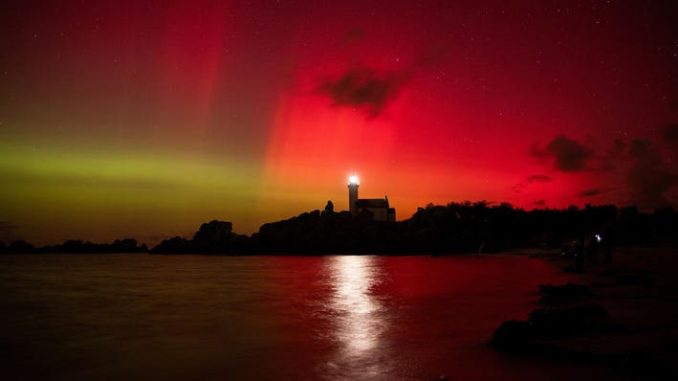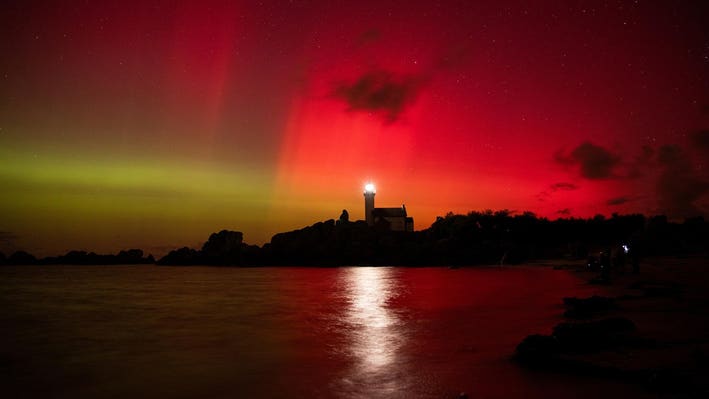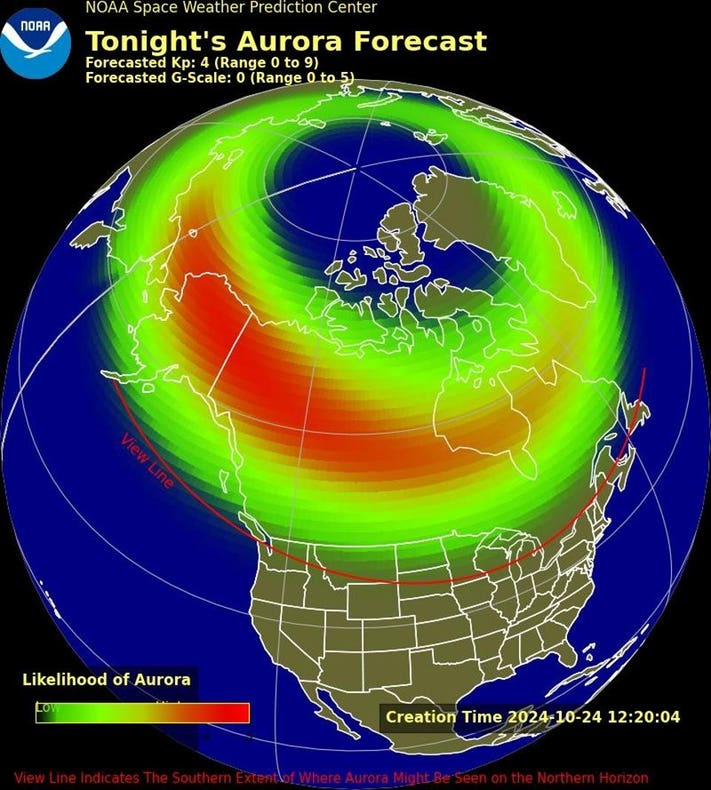
Northern Lights Update: These States Would See Aurora Borealis Tonight
A section of the northern U.S. could have an opportunity to see aurora borealis tonight, according to a National Oceanic and Atmospheric Administration forecast, and NASA believes stargazers will have more chances as activity on the sun’s surface peaks.
Key Facts
Thursday night’s aurora borealis forecast has a Kp index of four on a scale of nine, indicating the northern lights will become brighter and be “quite pleasing to look at” for people in the right areas.

Auroral activity is expected to increase on Friday before decreasing through the weekend, according to NOAA, as no geomagnetic storms—caused by a burst of energy and particles released by the sun—are forecast.
Though NOAA expects weaker auroral activity this weekend, agency officials and NASA said last week a “solar maximum” had been reached on the sun’s surface, likely increasing the number of sunspots that result in “high-impact” space weather that causes aurora borealis to form.
Where Will The Northern Lights Be Visible?
Select states near the Canadian border will have a lower chance of seeing the northern lights, with a higher likelihood of seeing the phenomenon across Canada and Alaska, according to NOAA. There’s a chance of seeing aurora borealis in northern Washington, Idaho, Montana, Minnesota and Wisconsin, and a lower likelihood in South Dakota, Michigan and northern Maine. (See viewing line below.)

What’s The Best Way To See The Northern Lights?
NOAA recommends traveling away from light pollution to a high vantage point to see the northern lights, which will become visible between 10 p.m. and 2 a.m. local time.
What’s The Best Way To Photograph The Northern Lights?
Visit Iceland, Iceland’s tourism website, suggests turning on night mode and a lower shutter speed on smartphones. If using a regular camera, Adobe recommends setting the focus to the farthest possible setting with a wide aperture, low shutter speed and high ISO value to capture the northern lights.
Key Background
Elsayad Talaat, NOAA’s director of space weather observations, said last week the sun’s 11-year cycle—Solar Cycle 25—has reached its maximum. This will result in more sunspots and coronal mass ejections, or bursts of plasma and magnetic fields emitted from the sun’s surface, that cause aurora borealis to appear farther south from the Earth’s North Pole. A sunspot resulted in a severe geomagnetic storm earlier this month, which pulled the northern lights as far south as Texas. Other celestial events have become visible to stargazers in recent weeks, including a comet NASA believes won’t be visible for another 80,000 years and another comet that could be seen during the day.
Leave a Reply